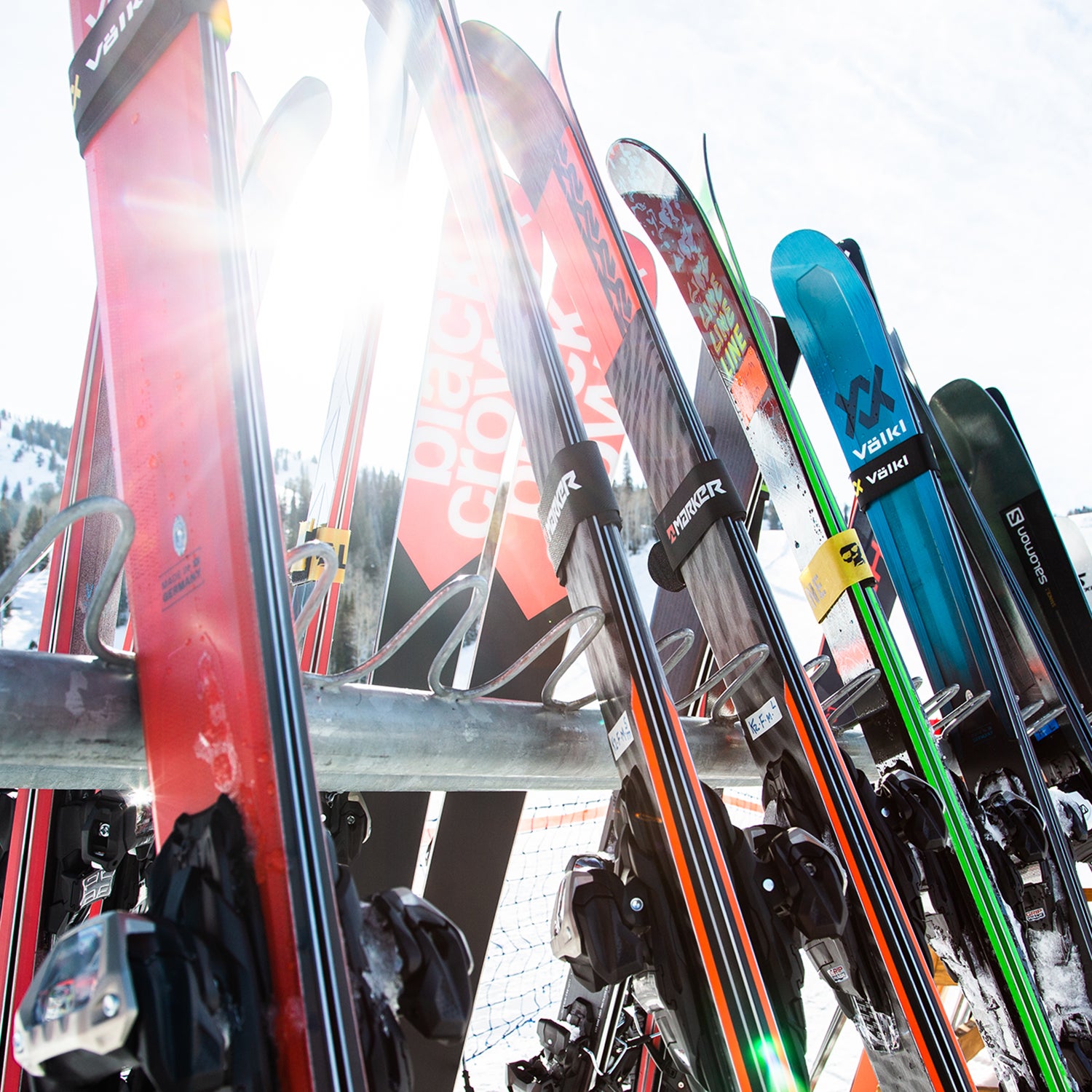If you’re shopping for skis and feeling overwhelmed by all the options, there’s one thing you should know right out of the gate: there are no bad skis. Trust us—along with our friends at , we test over 150 models each season and are always hard-pressed to come up with a short list of our favorites.
But there is such a thing as the wrong ski, especially if you’re an intermediate skier who’s still working on technique and building confidence on the slopes. If this is you, you shouldn’t necessarily be shopping for . Instead, you should be looking for a ski that’s accessible to those still learning how to bend and edge a ski.
Watch: What to Consider When Shopping for Skis
Generally speaking, that means a ski with a waist width of 80-90 millimeters and a little more shape to it than many of the wider and straighter all-mountain skis you see in the lift lines these days. These narrow all-mountain skis—also called —promote easier turn initiation and edge engagement, while still offering a solid platform in a variety of terrain (groomers, moguls, trees) and even in a few inches of fresh snow.
If you’re looking for a friendly but legit teaching tool that will take your skiing to the next level, we’ve got you covered. The experienced editors at SKI collect more tester feedback and data than anyone else in the biz, and they shared their intel with us to come up with this list of the best skis for folks looking to level up this season.
The following six skis were not only some of the , they were ranked by testers as the most user-friendly and confidence-inspiring frontside skis, making them ideal for those still working on their skills. They’re also great options for advanced and expert skiers who don’t want to have to work so hard for nice turns.
Read more:
At a Glance
If you buy through our links, we may earn an affiliate commission. This supports our mission to get more people active and outside. Learn more.
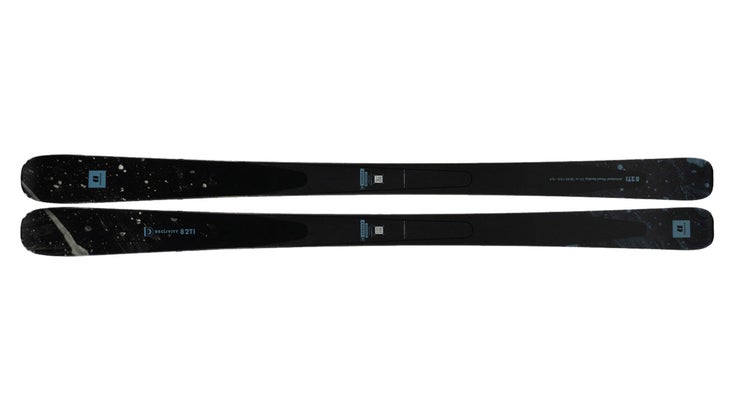
Armada Declivity 82 Ti
Dimensions: 128-82-110 mm
Lengths: 166, 174, 182 cm
Turn Radius: 15.9 m (174 cm)
Gender: Unisex
Pros and Cons
⊕ Easy to turn
⊕ Forgiving of mistakes
⊕ Versatile
⊗ Not the most dependable in crud
⊗ Has a speed limit
The Declivity 82 Ti was the most forgiving and accessible frontside ski we tested last season. Thanks to a soft and wide tip, initiating a turn is intuitive and almost effortless; but a full sheet of metal adds stability to make this ski trustworthy on hard snow. “It’s very easy to get this ski on edge and it doesn’t force you into a turn, which lower abilities will love for working on their carving,” noted one tester.
With an 82-millimeter waist and a shorter turning radius, the Declivity 82 Ti is a versatile ski that prefers cruising groomers at moderate speeds and encourages intermediates to test their skills in moguls and trees. It’s not the most lively or energetic ski, and it won’t stand up to experts who want to push it in crud or at top speeds, but you’d be hard pressed to find a ski with better performance in a user-friendly package.
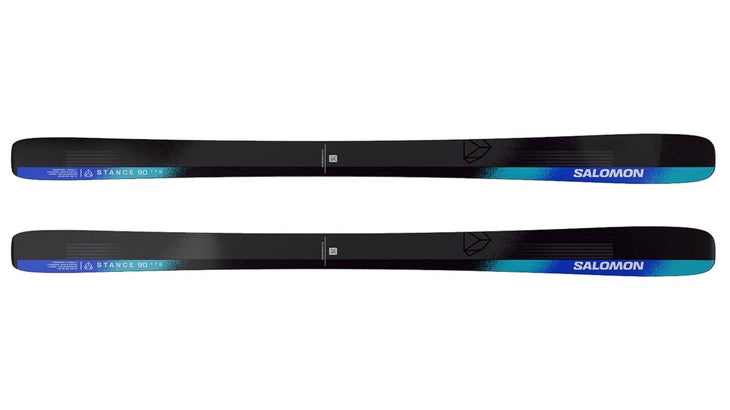
Salomon Stance 90
Dimensions: 126-90-108 mm
Lengths: 168, 176, 182, 188 cm
Turn Radius: 18 m (176 cm)
Gender: Unisex
Pros and Cons
⊕ Big sweet spot
⊕ Approachable
⊕ Performs on and off the groomers
⊗ Not very lively
In their feedback, testers called the Stance 90 an all-mountain ski for the masses with a huge sweet spot. Featuring a caruba and poplar wood core and two sheets of metal, the Stance 90 is light enough to make turn initiation easy, yet solid enough to be stable and predictable in variable conditions. A 90-millimeter waist makes it a versatile all-mountain tool—it holds its own on hard snow and won’t bat an eye at ducking into moguls, trees, or fresh snow.
Testers’ biggest beef with this ski is that it lacks some pop and pizazz. It might not be the most playful ski out there, but it’s an approachable all-mountain option that will make a wide variety of skiers happy. “This ski feels intuitive. Easy, fun, and predictable enough so you can go skiing and enjoy the view at the same time,” summed up one tester.
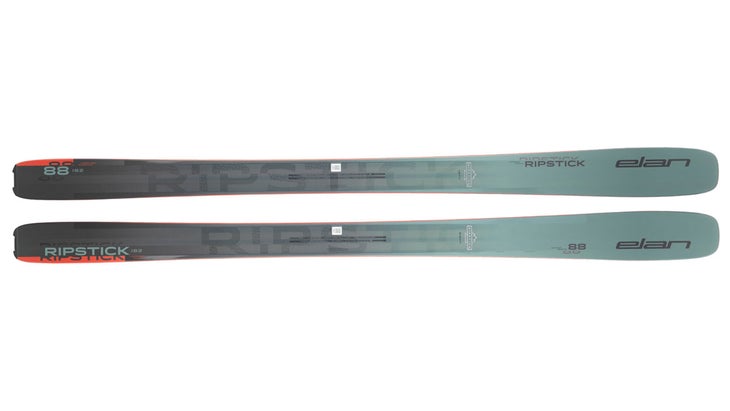
Elan Ripstick 88
Dimensions: 130-88-105 mm
Lengths: 148, 156, 164, 172, 180, 188 cm
Turn Radius: 15.4 m (172 cm)
Gender: Unisex
Pros and Cons
⊕ Easy to control
⊕ Great carver
⊕ Lots of length options
⊗ Lacks stability in ungroomed terrain
⊗ Easily overpowered
The Ripstick 88 is a ski instructor’s dream. It’s easy to turn, easy to control, and accommodating—it gives you nice, round turns without asking for much input. “This is a ski for those wanting easy-mode built into their ski,” reported one tester. “It’s comfortable in most conditions, maneuverable, and gives people access to good skiing for less work.”
Besides its approachability, the Ripstick 88’s standout characteristic is its carving chops. This ski wants to pull you into a turn and get on edge—all you have to do is think “carve” and you’re there. Testers reported this ski can get the job done off-piste as long as the snow is soft, but it shies away from crud and high speeds. Keep this one on mellower groomed runs to work on your arc and you won’t be disappointed.
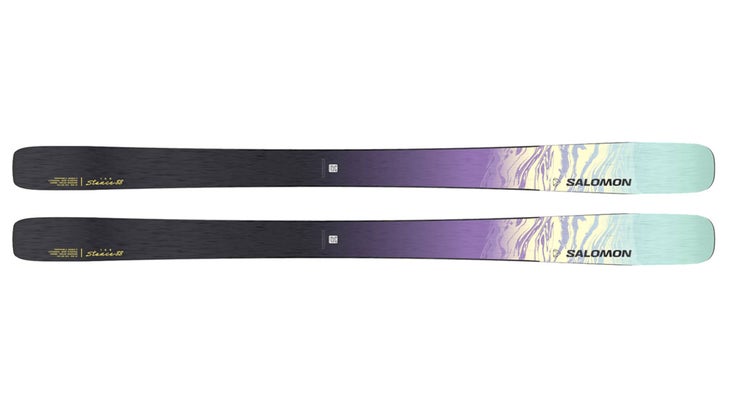
Salomon Stance 88 W
Dimensions: 122-88-104 mm
Lengths: 154, 161, 168, 174 cm
Turn Radius: 18 m (168 cm)
Gender: �´dz����’s
Pros and Cons
⊕ Stable
⊕ Versatile
⊕ Easy to control
⊗ Lacks energy
⊗ Easily overpowered by strong skiers
The Stance 88 W—the women’s version of the Stance 90 (listed above)—is slightly narrower and comes in shorter, women’s-appropriate lengths but shares a lot of the same performance characteristics with her brother. We tested the Stance 88 W in some extremely low-vis conditions at SKI’s gear test at Mt. Rose, Nevada, last season, and were pleasantly surprised with how reassuring these skis felt.
The Stance 88 W is a jack of all trades when it comes to terrain thanks to a balanced construction of wood and two sheets of metal and a middle-of-the-road waist width. While we appreciated it more on soft, groomed runs, it performed respectably in bumps and crud. Like the Stance 90, this ski didn’t wow us with its energy, but when conditions are tough, you want something smooth and predictable like the Stance 88 W underfoot.
“Totally forgiving but not a noodle, this ski has a wide range,” summarized one tester. “An expert will overpower it, but intermediate to advanced skiers will get a lot of confidence from the skis’ quietness.”
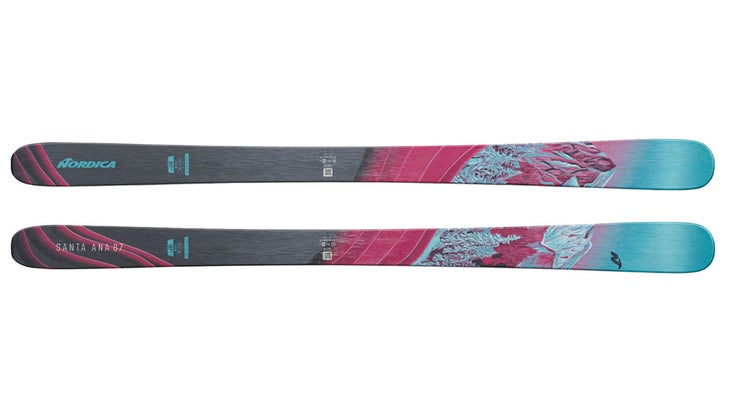
Nordica Santa Ana 87
Dimensions: 118-87-106 mm
Lengths: 150, 155, 161, 167, 173 cm
Turn Radius: 16.3 m (161 cm)
Gender: �´dz����’s
Pros and Cons
⊕ Very stable and dependable
⊕ Great edge performance
⊕ Responsive
⊗ Stiff and damp
The Santa Ana 87 is an all-mountain ski for everywoman, not just intermediates. Anyone can click into these sticks and enjoy a smooth, dependable ride. But intermediates especially will appreciate how confidence-inspiring the Santa Ana 87 is all over the mountain.
Those still working on their edging skills can trust this ski to hold on hard snow, and those ready to dip a toe off-piste will be encouraged by the Santa Ana 87’s mix of stability in variable conditions and agility in mixed terrain. “You can stretch your skiing out a little more thanks to this ski’s easy release and smooth engagement,” reported one tester.
True to the Nordica brand, the Santa Ana 87 is relatively stiff and damp, and testers noted it might overwhelm true novices. Yes, it’s a strong ski, but it has the power to make you a stronger skier.
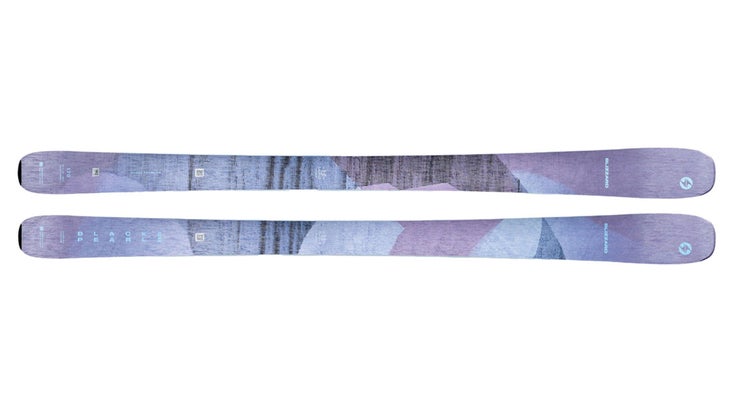
Blizzard Black Pearl 88
Dimensions: 127.5-88-109.5 mm
Lengths: 146, 152, 158, 164, 170, 176 cm
Turn Radius: 14 m (170 cm)
Pros and Cons
⊕ More manageable than previous Black Pearl 88
⊕ Great on hard snow
⊕ Lots of length options
⊗ Not the most agile
Like the Nordica Santa Ana 87, the Black Pearl 88 is not just a ski for intermediates. SKI’s expert testers loved this ski so much they named it the of a variety of ability levels.
A perennial favorite, the Black Pearl 88 was redesigned for this season and we loved how much friendlier this new version proved. “The updated model has easier turn initiation, smooth rebound, and a nice easy release in the tail,” commented one tester. “But it still has just as much stability and power [as the previous model] to hold fast on the groomers.”
Some testers noted that the ski wasn’t as agile as others in variable terrain, but that’s a small price to pay for how dependable it is on groomers and hard snow.

About SKI Test
- Number of skis tested: 14
- Number of testers: 27
- Testing location:
- Average age of tester: 37
- Average height of tester: 5’7”
- Average weight of tester: 144 lbs
Every season, �����ԹϺ��� and SKI host a week-long gear test and invite a group of seasoned industry professionals—ski instructors, ski shop employees, coaches, and outdoor industry professionals—to put more than 150 pairs of skis through their paces.
We ask our crew of 27 testers to ski every ski, identify its primary strengths, its weaknesses, who it’s designed for, and what terrain and snow conditions it’s most adept at. When judging a frontside ski, testers primarily assess how well it performs on groomed terrain, since that’s what this type of ski is primarily designed for.
They gauge how well the ski handles on hard-snow, at speed, and how responsive it is from edge to edge. Immediately after each run, testers fill out digital scorecards with their quantitative and qualitative feedback on each ski. Then it’s up to us to crunch the numbers and distill their commentary to inform our reviews of the best skis on the market today.

Frequently Asked Questions
What’s the Difference Between Beginner and Intermediate Skis?
You won’t really see true beginner skis on ski shop walls because true novices usually rent skis instead of buying them. The skis marketed and sold to novices tend to be lower-priced models that forego high-end ski materials and manufacturing practices in the interest of keeping skis more affordable (typically under $700). We refer to these skis as “value” skis rather than “beginner” skis.
What’s the Difference Between Intermediate Skis and Skis For Advanced or Expert Skiers?
Skis designed for intermediate skiers tend to be more affordable and lighter than skis designed for experts because they use cheaper materials. This is not to say that these skis don’t ski well—they get the job done just fine for intermediates who ski at moderate speeds and who push or pivot their skis through a turn (as opposed to carve a turn).
Skis designed for advanced and expert skiers tend to contain heavier materials like metal and reinforced sidewalls for enhanced stability at speed, better energy transfer, and more precise edging performance.
What Ski Length Is Right for Me?
It all depends on your physical build, skill, and skiing aspirations. The best way to determine the right ski length for you is to visit your local (and reputable) ski shop and talk to the pros. If that’s not an option, then a very general rule of thumb is that intermediate skiers should consider skis that are between chin and nose height.
A shorter ski is easier to turn and control, but offers less stability at speed and in variable snow conditions. So if you’re an intermediate with big skiing aspirations, you might want to consider a slightly longer ski that you won’t outgrow in one season.


